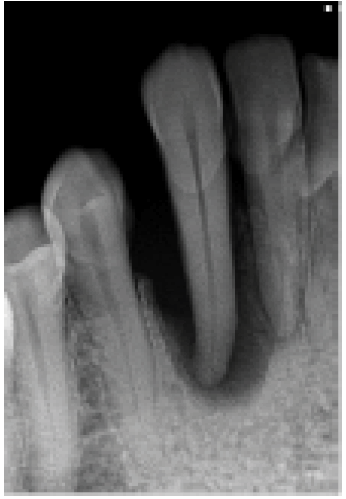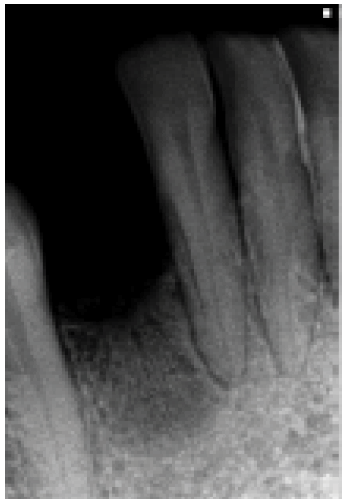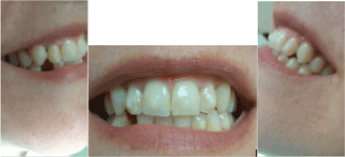Proper Management of a Phobic Patient to Complete Comprehnsive Dental Care: Case Report
Tasadaq Khakwani, Suhasini Mandiga, Natalia Elson and Denise Foran
| Tasadaq Khakwani, Suhasini Mandiga, Natalia Elson* and Denise Foran New York University College of Dentistry, NY, USA |
| Corresponding Author: Natalia Elson,Clinical Instructor, NYU College of Dentistry, Cariology and Comprehensive Care, 345 E.24th Street, New York, NY, USA.Tel: 1 631 525 3827 E-mail: natalia.elson@gmail.com |
| Received: October 12, 2015 Accepted: December 02, 2015 Published: December 10, 2015 |
| Related article at Pubmed, Scholar Google |
Abstract
Performing dental treatment on fearful and anxious patient can be a daunting task, both for the healthcare provider as well as the patient. Approximately 7 to 10% of Americans experience dental phobia, leading to avoidance of dental treatment and delaying dental care as they only present during emergencies and palliative care. Proper understanding and management of the patient’s chief concern during the emergency visit is essential to gain patient’s trust to continue comprehensive treatment. The purpose of this case report is to describe how a 40-year old female with dental phobia who presented as an emergency with pain and swelling in the right cheek, was properly managed by a general care practitioner allowing her continue comprehensive evaluation and treatment which including several surgical procedures. This report highlights the concerns, history, diagnosis, and management of a patient with dental phobia.
Keywords |
||||||||||
| Dental care; Anxiety; Implants; Radiographic examination; Laser | ||||||||||
Background |
||||||||||
| According to recent studies at Columbia Dental School and the University of Washington, approximately 50% of the American population i.e. 30 to 40 million people, avoid dental care as a direct result of anxiety and fear [1]. Studies have demonstrated a strong association between dental fear, poor oral health, and adverse childhood experiences such as domestic violence, parental incarceration, mental illness, access to healthcare and utilization, and drug abuse. Presence of an adverse childhood event increases the risk of developing oral diseases due to racial and socioeconomic factors, and dental phobia [2]. Dental fear is the primary reason a patient is referred for sedation to receive dental treatment [3]. Over recent decades, the everyday clinical practice of dentistry has benefited from major advances in techniques, technologies and materials, as well as in infection control procedures [4]. With the advent of laserchairside time is reduced and their painless and bloodless procedures further ensure patient comfort during treatment [5]. Authors have the phobic patients who is coming only because of laser is being used. This suggests, a proper behavioral management is essential in treating these patients adequately. Many patients are able to overcome dental phobia after a positive experience during their emergency visit. | ||||||||||
Case Report |
||||||||||
| 04/19/12 | ||||||||||
| A 40-year old female presents to the clinic with a chief concern of facial swelling and pain. Medical history is insignificant. Dental history includes only emergency visits due to fear of dentists. [Fear Scale of 8] Extra-oral exam revealed diffused swelling of right cheek with mandibular lymph nodes involvement. Intraoral exam showed fluctuation and pain on palpation of the mucogingival fold around teeth #26,27,28. Tooth #27 was positive to percussion and negative to endo ice. Radiographs determined tooth #27 to be hopeless (Figures 1 and 2). | ||||||||||
| Diagnosis | ||||||||||
| Periodontal abscess with endondotal involvement of #27 leading to necrotic pulp. | ||||||||||
| Emergency treatment plan | ||||||||||
| Incision and drainage of the site and extraction of #27 under local anesthesia using iPlus (Biolase) using manufacture procedure setting and MZ6 tip for pain management using Epic (Biolase). | ||||||||||
| A prescription of Amoxicillin 500mg TID for 7days and Anaprox 550mg for pain every 12 hours as needed was provided. | ||||||||||
| First visit treatment considerations | ||||||||||
| Extra time spent initially with the phobic patient showing care and empathy helped relieve anxiety. A thorough acknowledgement of past dental experiences was necessary to build initial rapport so that the chief complaint could be properly addressed and establish trust (Figure 3). | ||||||||||
| 04/29/12 | ||||||||||
| Patient returned for bone grafting to preserve the site for an implant. Bone grafting was performed using Bio-oss and Bio guide. Vicryl sutures were utilized and primary closure was obtained. Postop appointments were scheduled the next day and the following week. | ||||||||||
| 05/16/12 | ||||||||||
| Comprehensive evaluation was done. | ||||||||||
| Diagnosis | ||||||||||
| Chronic generalized moderate to severe periodontitis. Dental caries included teeth #2, 4, 18, 20. | ||||||||||
| Mild spacing. Soft tissue fibroma on lower lip. | ||||||||||
| Comprehensive treatment plan | ||||||||||
| 4 Quad Scaling and Root Planing, using repair protol of Biolase, excision of fibroma with iPlus under topical gel Cetacaile, Resin Restorations #2, 4, 18, 20, orthodontic treatment using Clear Correct , Straumann 3.3 mm bone level implant to replace and restore site #27. The treatment was successfully completed with Biolase whitening gel using Diode lase Epic (Biolase) (Figures 4 and 5). | ||||||||||
Discussion |
||||||||||
| This report highlights the history, diagnosis, and treatment of a patient with dental phobia from day 1 of the emergency walk-in to completion of a comprehensive treatment by a general practitioner. The first treatment objective for fearful patients must be to establish a trusting, professional and open relationship. Proper explanation of the procedure and educating the patient is a key factor in achieving comprehensive care. Asking non-judgmental questions and making patients aware of your concern for their comfort can help relieve anxiety and allow them to share their needs. Treatment planning should be adjusted to the patient’s level of comfort i.e. a patient-centered approach. Preventive and routine dental care is essential to reduce anxiety and improve quality of health. | ||||||||||
| Treatment considerations should include | ||||||||||
| 1. Non-threatening comforting environment e.g. headphones, blanket | ||||||||||
| 2. Pharmacological sedative agents pretreatment | ||||||||||
| 3. Nitrous oxide sedation during treatment | ||||||||||
| 4. Understanding patient’s history of dental experiences and fear | ||||||||||
| 5. Avoid use of the word “pain” | ||||||||||
| 6. Allow patients to maintain control throughout their dental visit. | ||||||||||
| 7. Reminder that the patient is not alone. | ||||||||||
| 8. Psychiatry referral | ||||||||||
Conclusion |
||||||||||
| Successful management of an emergency patient during the first visit established good patient - dentist - staff relationship bringing the patient back in several times during the course of the year thus completing comprehensive dental treatment including bone grafting, implant placement, periodontal therapy, and orthodontics, laser assisted treatment. As a result of proper management, patient is more compliant and in improved oral health. We also saw the benefit of using Laser in phobic patient due to less bleeding, less or no pos-op pain and reduced use of anesthesia (no needles from patient perspective) | ||||||||||
Figures at a glance |
||||||||||
|
||||||||||
References |
||||||||||
|

Open Access Journals
- Aquaculture & Veterinary Science
- Chemistry & Chemical Sciences
- Clinical Sciences
- Engineering
- General Science
- Genetics & Molecular Biology
- Health Care & Nursing
- Immunology & Microbiology
- Materials Science
- Mathematics & Physics
- Medical Sciences
- Neurology & Psychiatry
- Oncology & Cancer Science
- Pharmaceutical Sciences





